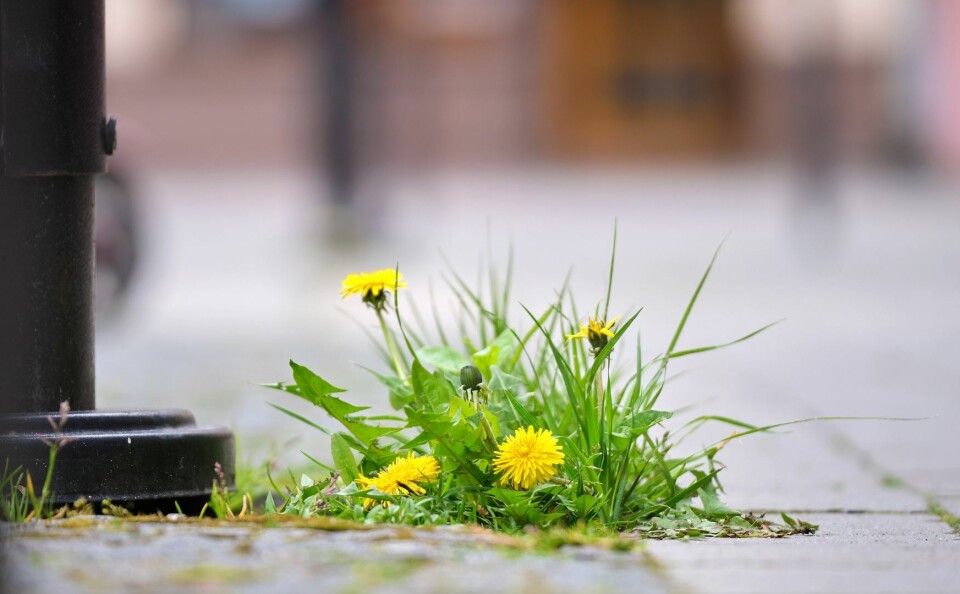-
Letters: France needs a new strategy to stop spam calls
Connexion reader says the new legislation will not work just as previous rules failed
-
Letters: VAT threshold reduction would hurt small businesses in France
Connexion reader notes that the additional tax burden would bring more bureaucracy with it
-
Comment: How France should respond to ‘bully’ Trump's tariffs
Columnist Simon Heffer looks at the effect the brewing trade war may have on France
‘French towns should ditch hanging baskets and learn to love weeds’
Local authorities are losing the battle against weeds following the glyphosate ban but Samantha David thinks we should embrace the dandelion

Back in 2019, when dozens of weedkillers containing glyphosate were banned in France, who could have foreseen how this would affect the country’s pavements?
Personally, I was so used to seeing acres of pristine concrete and paving slabs that I don’t think I even consciously realised that weedkiller was used to keep them that way.
Glyphosate is terrible stuff
Regular exposure to large doses of it can cause cancer and it kills the planet.
I’m 100% sure we’re better off without it, and roll on the day when farmers are also forced to stop using it.
Read more: French firm SNCF to use more natural glyphosate alternative
After the ban, though, I noticed our local maintenance team using a flame-thrower to burn weeds away.
People whose painted wooden gates fronted the pavements were definitely not keen.
I bet whatever flammable liquid was being burnt, it was also quite polluting.
The flamethrowers didn’t last long
Next up were petrol strimmers.
They were also quite polluting, as well as being noisy and not especially friendly to painted gates.
Petrol prices went through the roof: bye-bye, strimmers.
Vinegar made the village smell like a chip shop, organic weedkillers seemed to make the weeds grow faster, and eventually the team appeared with rakes and hoes.
None of the above worked as well as glyphosate.
The wild plants and weeds are very pretty
After each and every attack, it was only a matter of days before the weeds began growing back, looking as perky as before.
The maintenance team started to look glum
There was a definite absence of enthusiasm about their weed-killing activities.
Now they’re on their well-deserved holidays, there are daisies and dandelions growing all over the place.
There is also a climbing plant with pale green leaves and white flowers draped around the base of the fountain, and a creepy plant with bright green leaves and small purple flowers growing across the low wall by the church.
There are tufts of grass growing between the paving stones and along the fence.
They’re all very pretty, to be honest. I’m also guessing that more wild plants is good news for bees.
Wasting money on wilting hanging baskets
Meanwhile, the incredibly expensive baskets of flowers hanging from the lamp-posts are starting to wilt because of the watering ban.
The same thing happened last year, which is why quite a few neighbouring villages have given up buying municipal flowers every summer.
What’s the point if they won’t be allowed to water them? It’s just a waste of money.
According to pundits, rising fuel prices and climate change mean budget cuts and hosepipe bans are here to stay.
So instead of buying expensive annuals carefully nurtured in heated greenhouses, perhaps councils could look at more permanent planting?
More daisies around the village
Trees provide natural shade and cool villages down and, once established, plants such as pampas grass don’t need watering and come back every year.
I’m not seriously suggesting tumbleweed, or even a nice display of nettles and thistles outside the mairie.
But when I see how pretty weeds can be, and how well they grow without any watering at all, I also truly wouldn’t mind seeing more daisies, buttercups and dandelions around the village.
Related articles
Organic crops in France found to contain herbicide carried in wind
How winemakers in France are reducing pesticide use
How can we stop the spread of Japanese knotweed to our French garden?
























